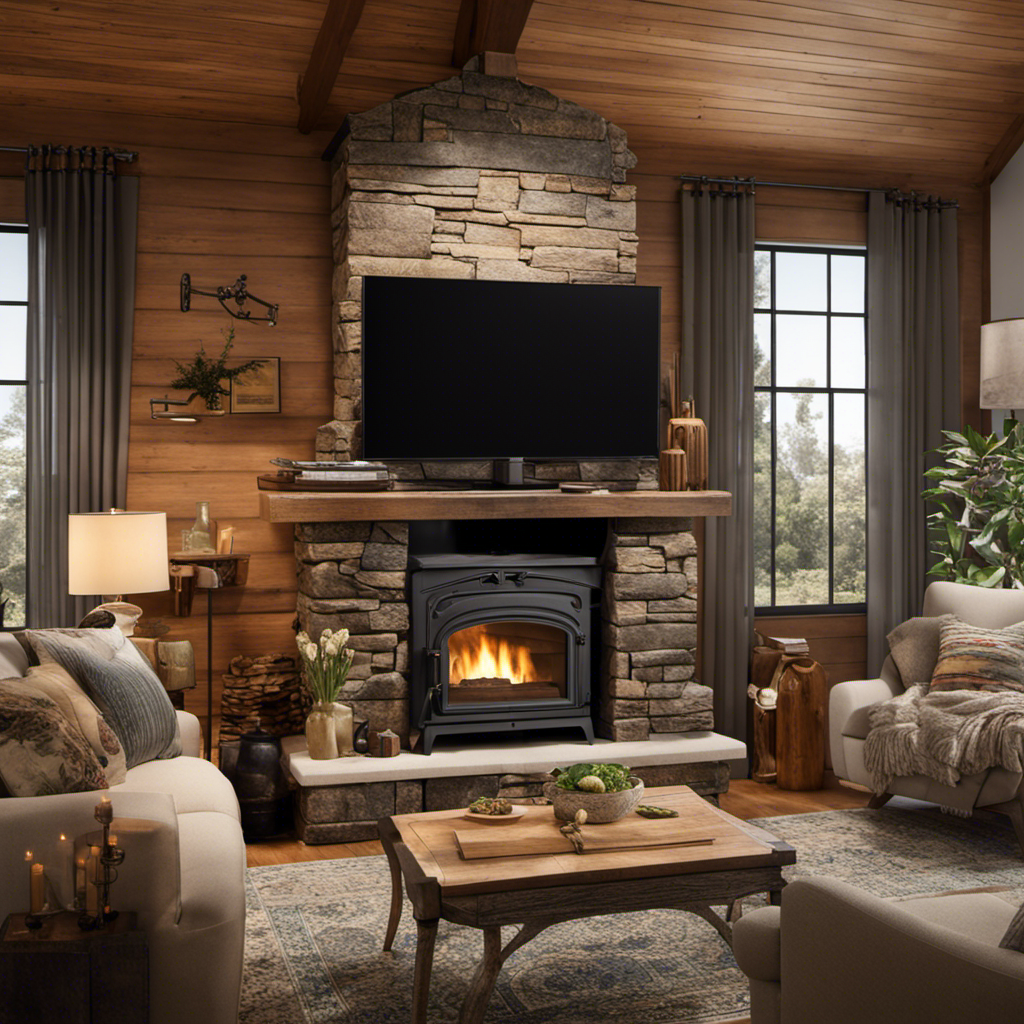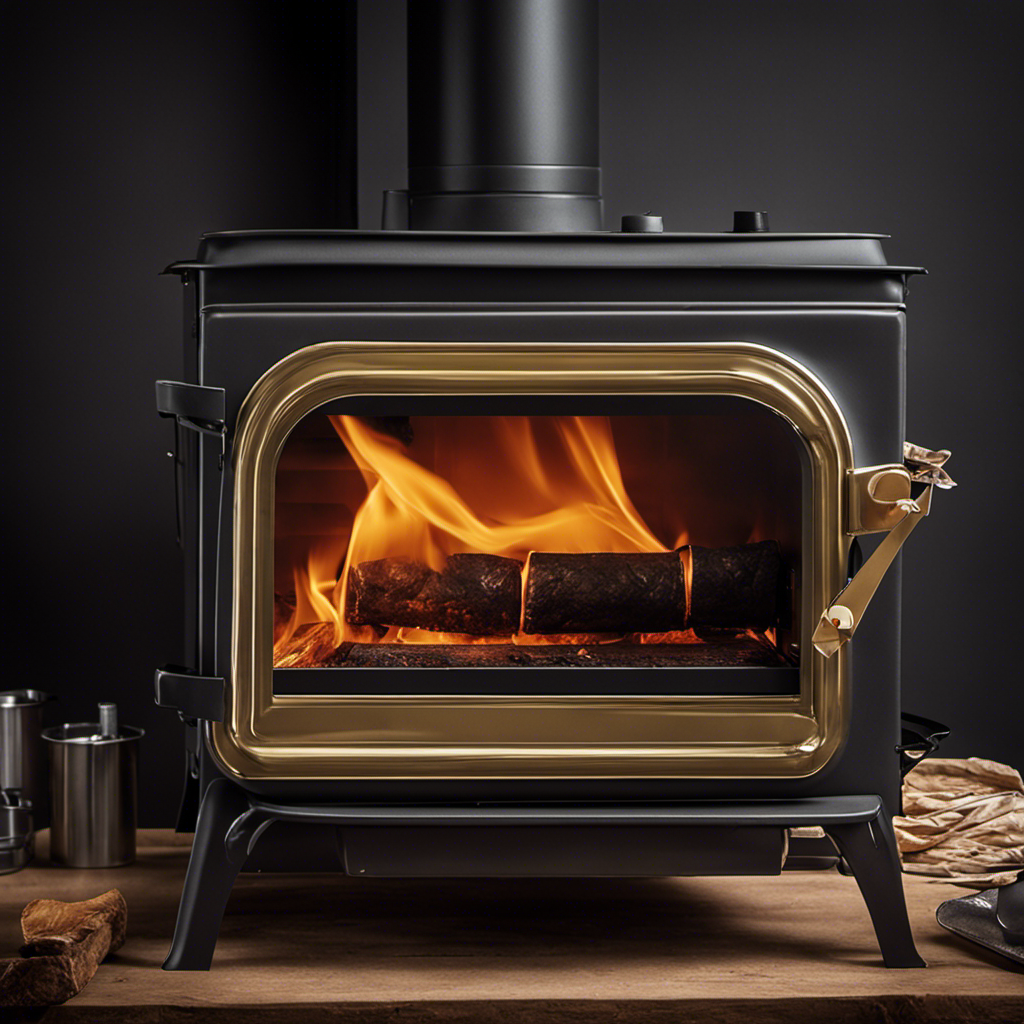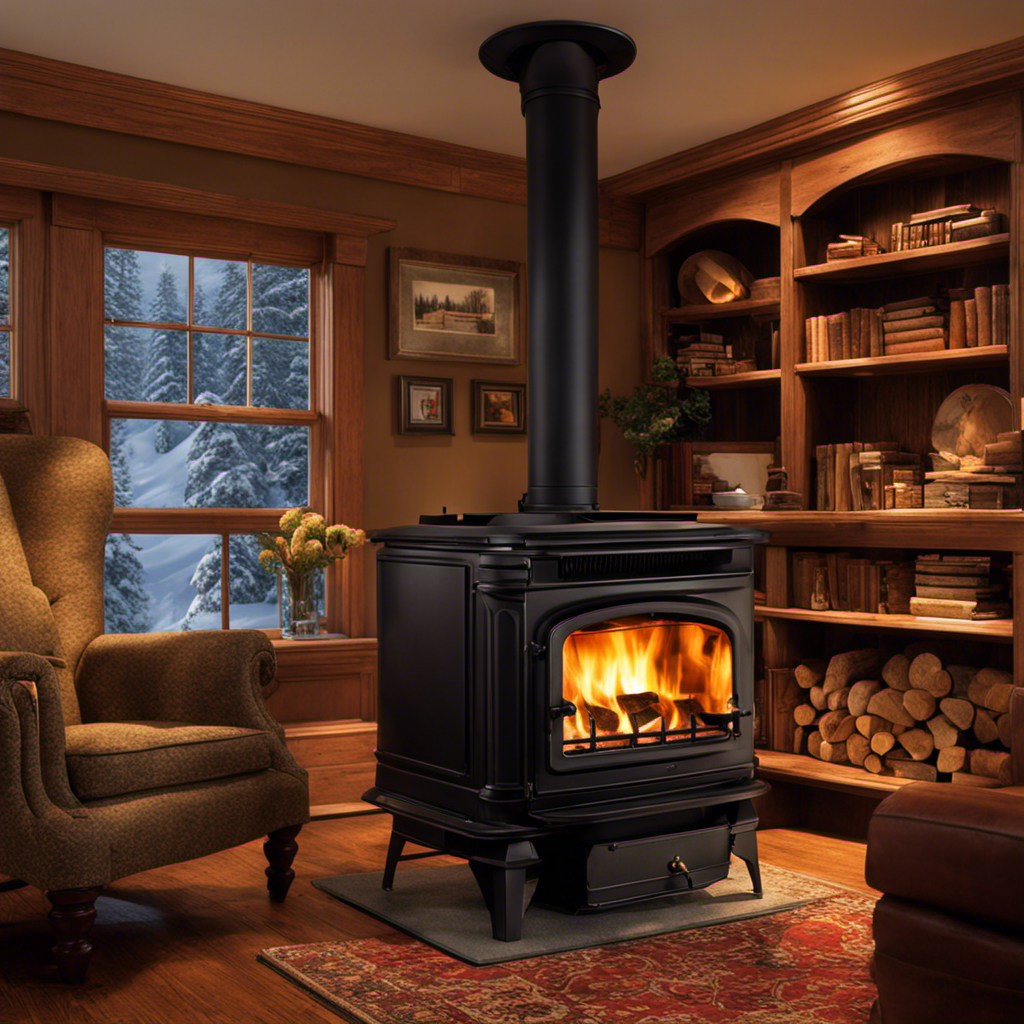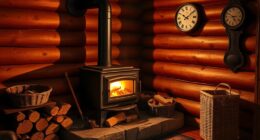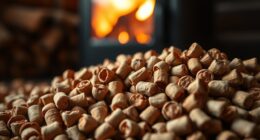Cooking on a wood stove is much like engaging in a dance with fire. It requires skill, expertise, and an in-depth understanding of how heat moves. In this manual, I will share my insights on mastering the art of preparing food using a wood stove.
From selecting the right cookware to controlling the temperature, I will provide detailed instructions and delicious recipes to ensure your meals are a success.
Get ready to embark on a culinary journey that will ignite your taste buds and warm your soul.
Key Takeaways
- Cast iron cookware is ideal for cooking on a wood stove due to its ability to distribute heat evenly.
- Proper care and maintenance of the wood stove, including clearing out ashes and checking for obstructions, is essential for safe and efficient cooking.
- Controlling and monitoring the temperature of the wood stove is crucial for successful cooking, and can be achieved through firewood selection, cleaning the stove, and adjusting damper settings.
- Tips for temperature management include using a cast iron skillet, preheating the stove, controlling airflow, using a thermometer, and using a heat diffuser to prevent hot spots and burning.
Choosing the Right Cookware
I prefer using cast iron cookware on a wood stove because it distributes heat evenly. Cast iron is a durable and versatile material that retains heat well, making it perfect for cooking on a wood stove.
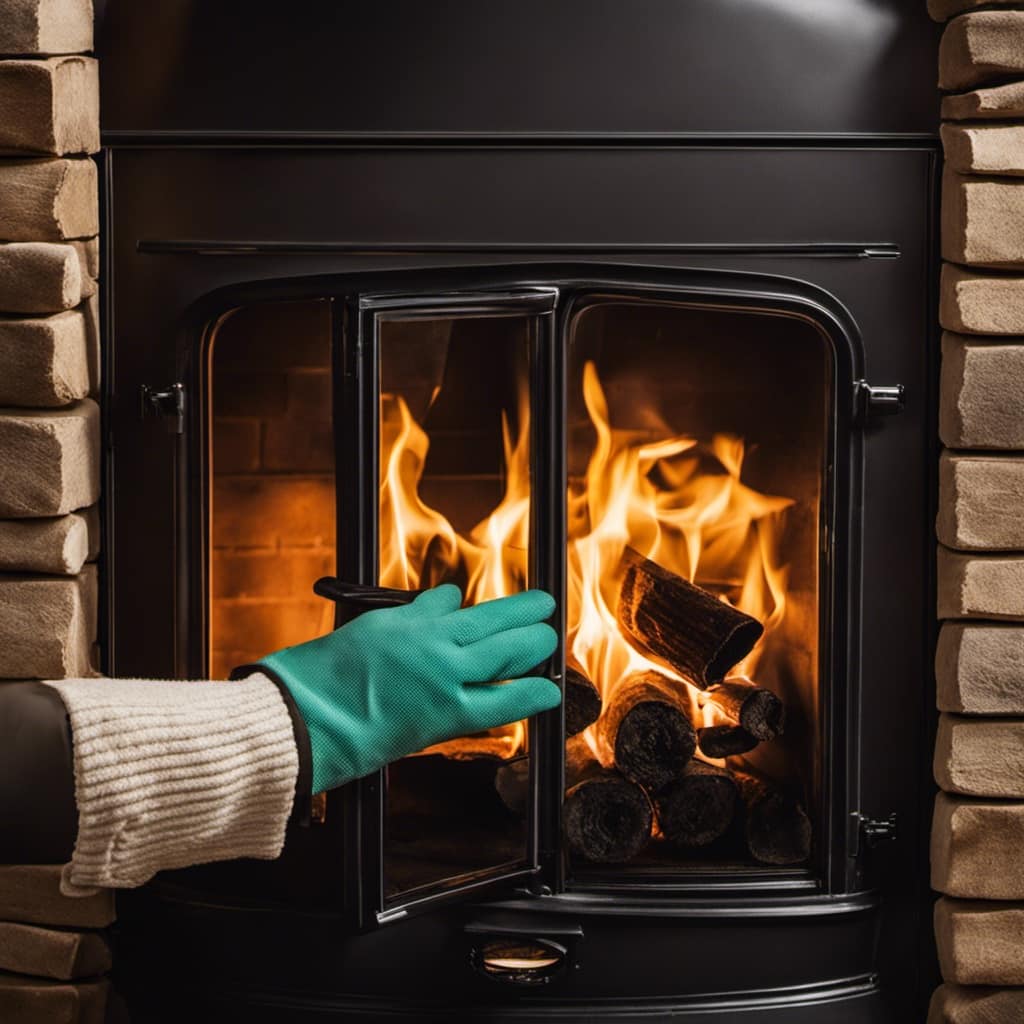
Before using cast iron cookware, it’s essential to season it properly. Seasoning involves applying a thin layer of oil to the surface and heating it to create a non-stick coating. This process helps prevent food from sticking and also enhances the flavor of the dishes.
To clean cast iron, I avoid using soap as it can strip away the seasoning. Instead, I simply rinse the cookware with hot water and scrub it gently with a brush or sponge. After cleaning, I dry the cast iron thoroughly to prevent rusting. By taking proper care of my cast iron cookware, I ensure its longevity and optimal performance on the wood stove.
Transitioning to the next section, preparing your wood stove, requires ensuring that the stove is clean and the firewood is properly stacked and ready for use.
Preparing Your Wood Stove
Before starting, I need to make sure that my wood stove is properly cleaned and maintained. This is essential for safe and efficient cooking. Here are a few key steps I take to prepare my wood stove:
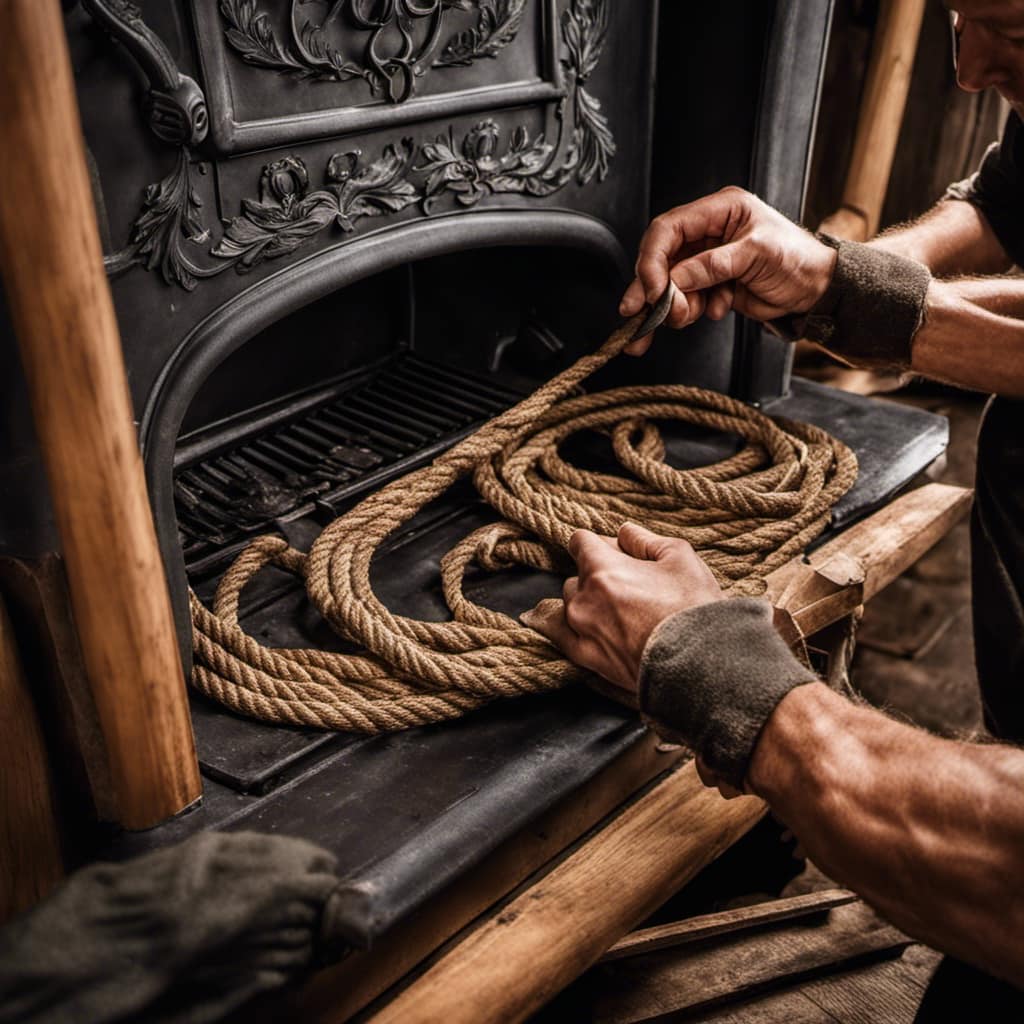
Clearing out the ashes: Removing the ashes from the previous fire is important to ensure proper airflow and prevent any blockages. It also helps maintain a clean and healthy cooking environment.
Checking the chimney: Regularly inspecting the chimney for any obstructions or buildup is crucial to prevent chimney fires. A clean chimney allows for proper ventilation and efficient burning of the fuel source.
Cleaning the stovepipe: The stovepipe can accumulate creosote, a flammable substance, over time. Regularly cleaning the stovepipe reduces the risk of a chimney fire and ensures the stove operates optimally.
Inspecting the gaskets: The gaskets around the stove door and other openings need to be in good condition to maintain a proper seal. This prevents any air leakage and helps control the heat output.
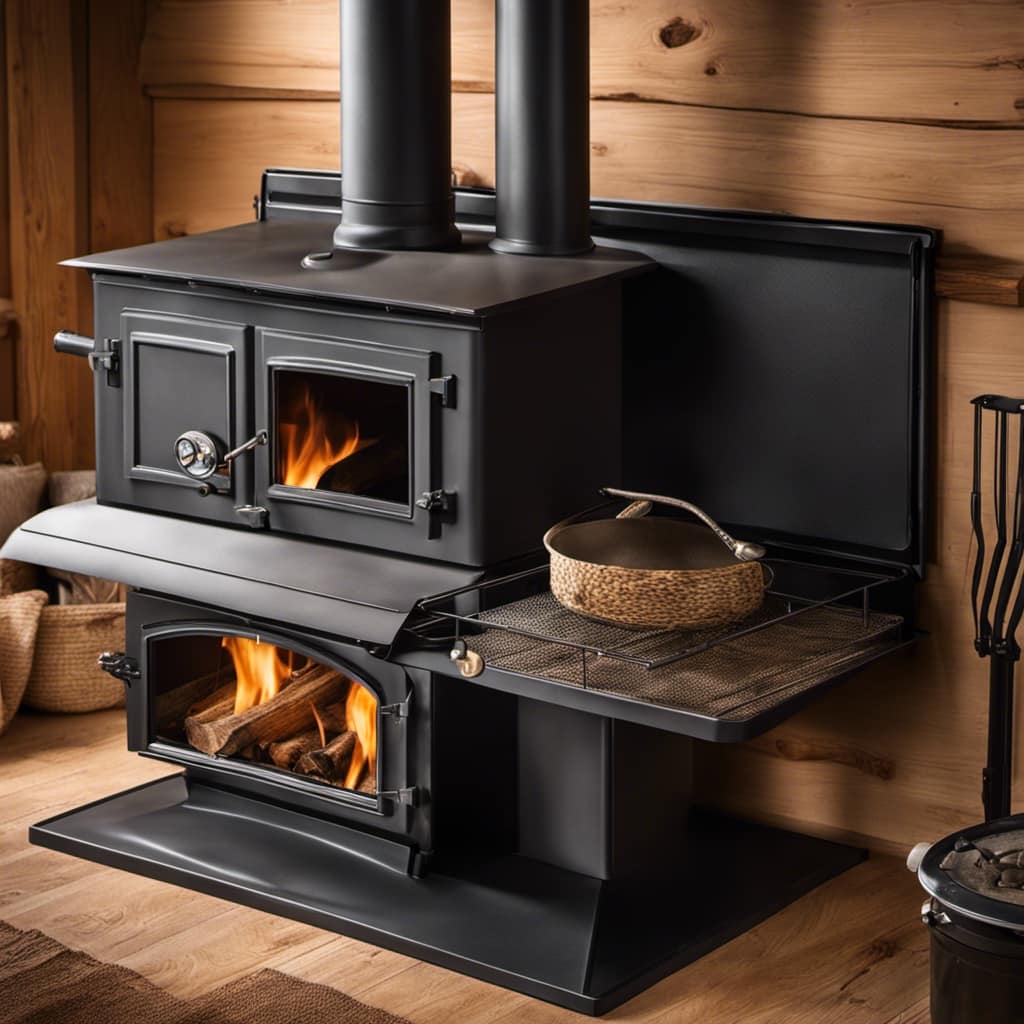
Fuel source preparation: I make sure to have a sufficient supply of seasoned firewood close to the stove. Properly dried firewood burns more efficiently and produces less smoke and creosote.
Controlling the Temperature
Controlling the temperature is crucial when cooking on a wood stove. To achieve the desired heat, I employ various heat regulation techniques.
Heat Regulation Techniques
While cooking on a wood stove, it’s important to adjust the airflow to control the heat. Proper heat regulation ensures that your food cooks evenly and to perfection. Here are some techniques I use:
Firewood selection: Choosing the right type of firewood is crucial for maintaining a consistent heat. Hardwoods like oak and maple burn longer and produce more heat compared to softwoods.

Maintaining a clean stove: Regularly cleaning your stove not only improves its efficiency but also prevents the buildup of creosote, a flammable substance that can reduce heat output and pose a fire hazard.
Controlling damper settings: Adjusting the damper allows you to control the amount of oxygen entering the stove, thus regulating the fire’s intensity. A closed damper reduces airflow, while an open damper increases it.
Using the stove’s air controls: Many wood stoves have air controls that can be adjusted to regulate the heat. Experiment with different settings to find the perfect balance for your cooking needs.
Monitoring the fire: Keep an eye on the fire to ensure it remains at the desired heat level. Add or remove firewood as needed to maintain a steady temperature.
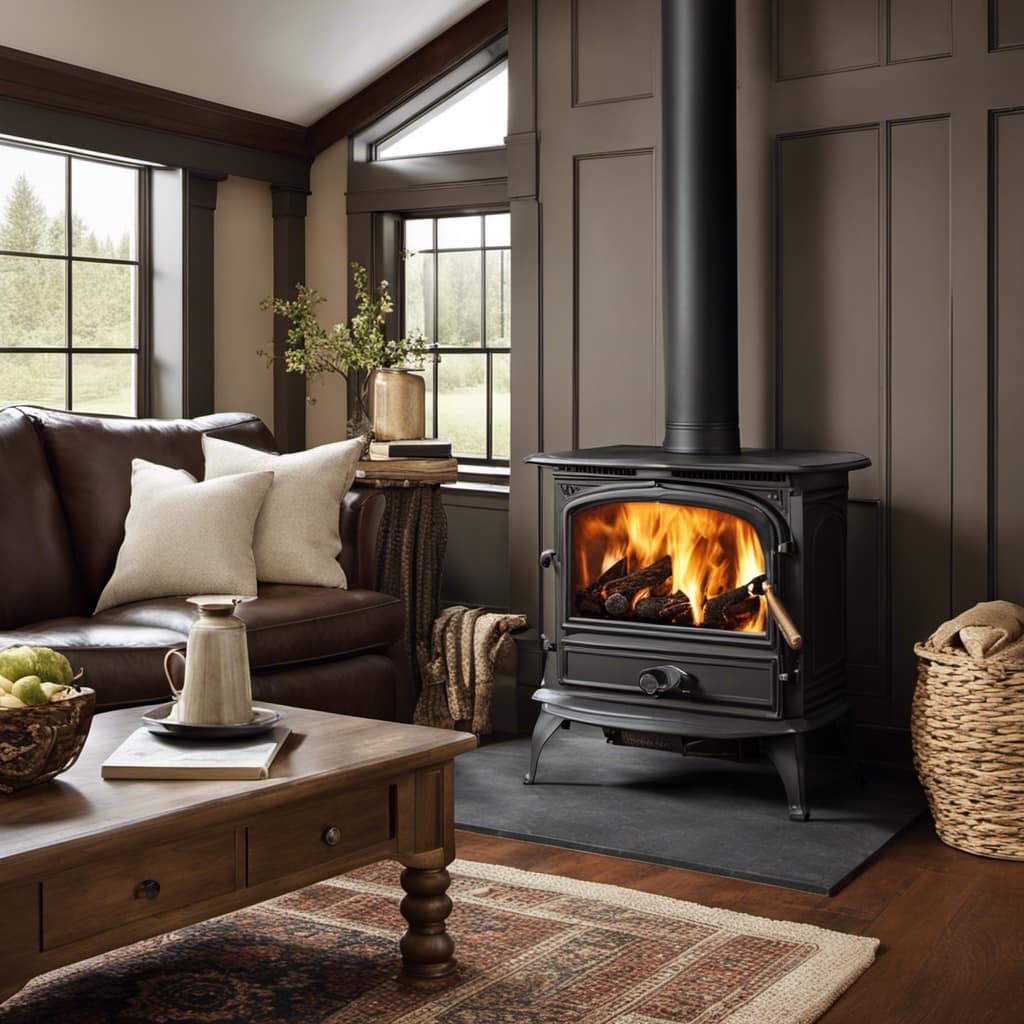
By following these heat regulation techniques, you can achieve consistent and delicious results while cooking on a wood stove.
Now, let’s move on to some temperature management tips.
Temperature Management Tips
To ensure that the food is cooked to perfection, it’s important to carefully manage the temperature while using a wood stove. Heat distribution within the stove can be uneven, so it’s crucial to monitor and adjust the temperature throughout the cooking process. Here are some tips to help you achieve optimal temperature management:
| Tips | Benefits |
|---|---|
| Use a cast iron skillet | Ensures even heat distribution |
| Preheat the stove | Reduces cooking time estimation |
| Control airflow | Regulates the intensity of the heat |
| Use a thermometer | Provides accurate temperature readings |
| Use a heat diffuser | Prevents hot spots and burning |
Controlling Stove’s Cooking Heat
I can regulate the cooking heat of my wood stove by adjusting the airflow and using a heat diffuser. By managing the airflow, I can control the intensity of the fire and the amount of heat produced. This allows me to cook my meals at the desired temperature, whether it’s a slow simmer or a high heat sear.
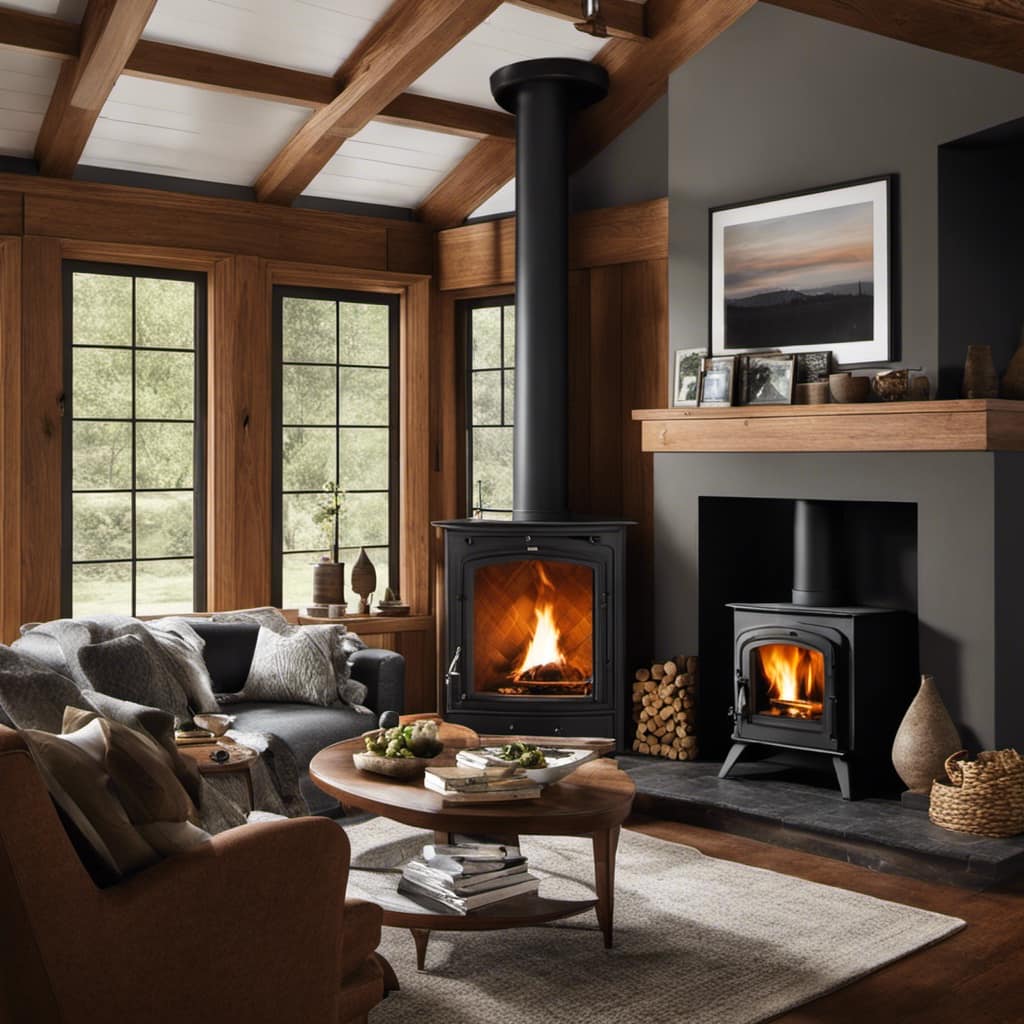
Additionally, using a heat diffuser helps distribute the heat evenly across the cooking surface, preventing hot spots and ensuring even cooking.
To further enhance the efficiency of my wood stove, I regularly perform stove maintenance. This includes cleaning the stovepipe, removing creosote buildup, and inspecting the gaskets for any leaks. By properly maintaining my stove, I can maximize its fuel efficiency and ensure optimal performance.
Basic Techniques for Wood Stove Cooking
When cooking on a wood stove, I find that using cast iron cookware helps distribute heat evenly. This is crucial for achieving consistent cooking results. Cast iron has excellent heat retention properties, which means that once it gets hot, it stays hot. This is especially beneficial when cooking on a wood stove, as the heat source can fluctuate.
One of my favorite wood stove recipes is a hearty stew. To make it, I start by browning the meat in the cast iron pot. The even heat distribution ensures that the meat gets a nice sear on all sides. Then, I add in the vegetables and broth, and let it simmer slowly on the wood stove. The cast iron pot holds the heat well, allowing the flavors to meld together beautifully.
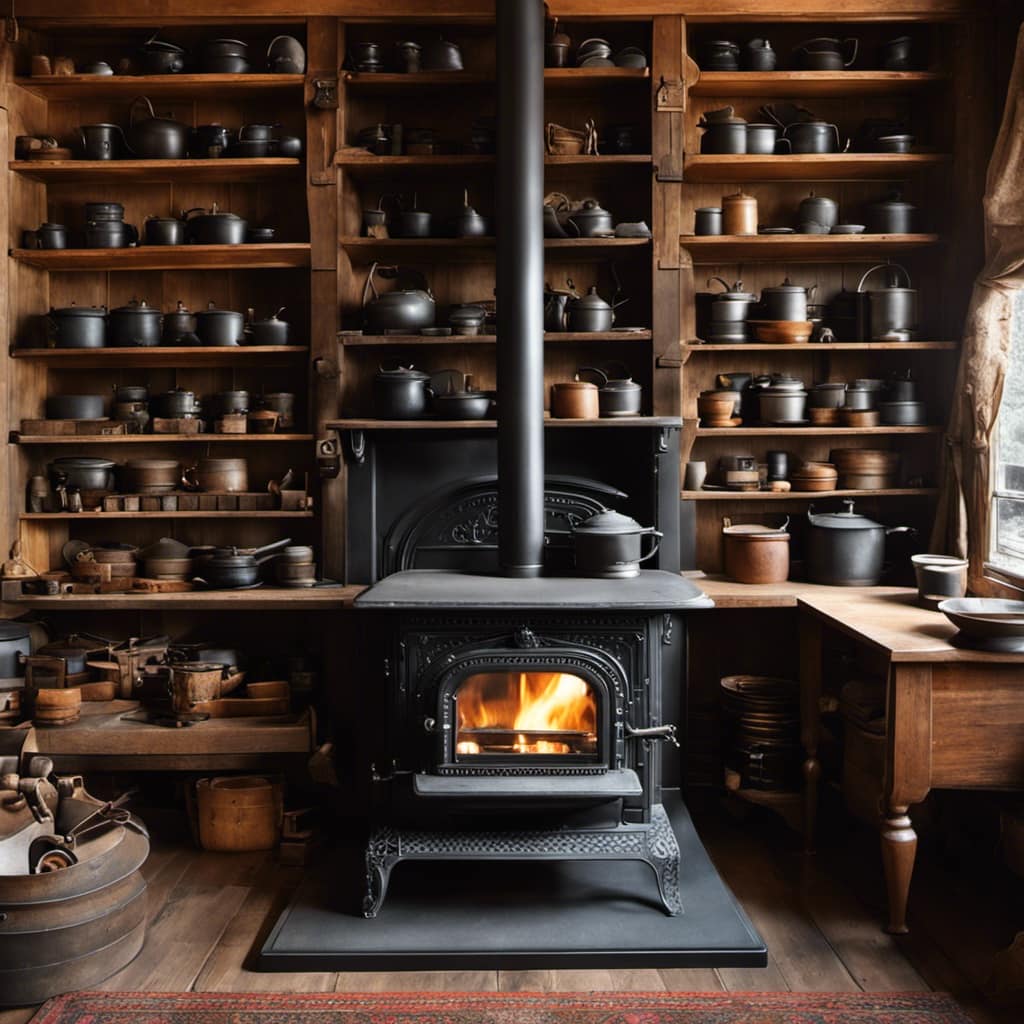
When it comes to wood stove cooking techniques, it’s important to keep an eye on the temperature. Adjusting the airflow and adding or removing wood can help control the heat. I’ve found that using smaller pieces of wood or splitting them into smaller sizes helps maintain a consistent temperature. This prevents any sudden spikes or drops in heat, which can affect the cooking process.
Recipes for Delicious Wood Stove Meals
Using cast iron cookware for preparing meals on a wood stove adds a rustic flavor to the dishes. There’s something incredibly satisfying about the combination of the smoky aroma from the wood stove and the rich taste that only cast iron can provide.
When it comes to wood stove cooking techniques, there are a few recipes that I absolutely love. Here are some of my favorites:
Campfire chili: Slow-cooked with beans, ground beef, and a blend of spices, this hearty chili is perfect for a chilly evening by the fire.
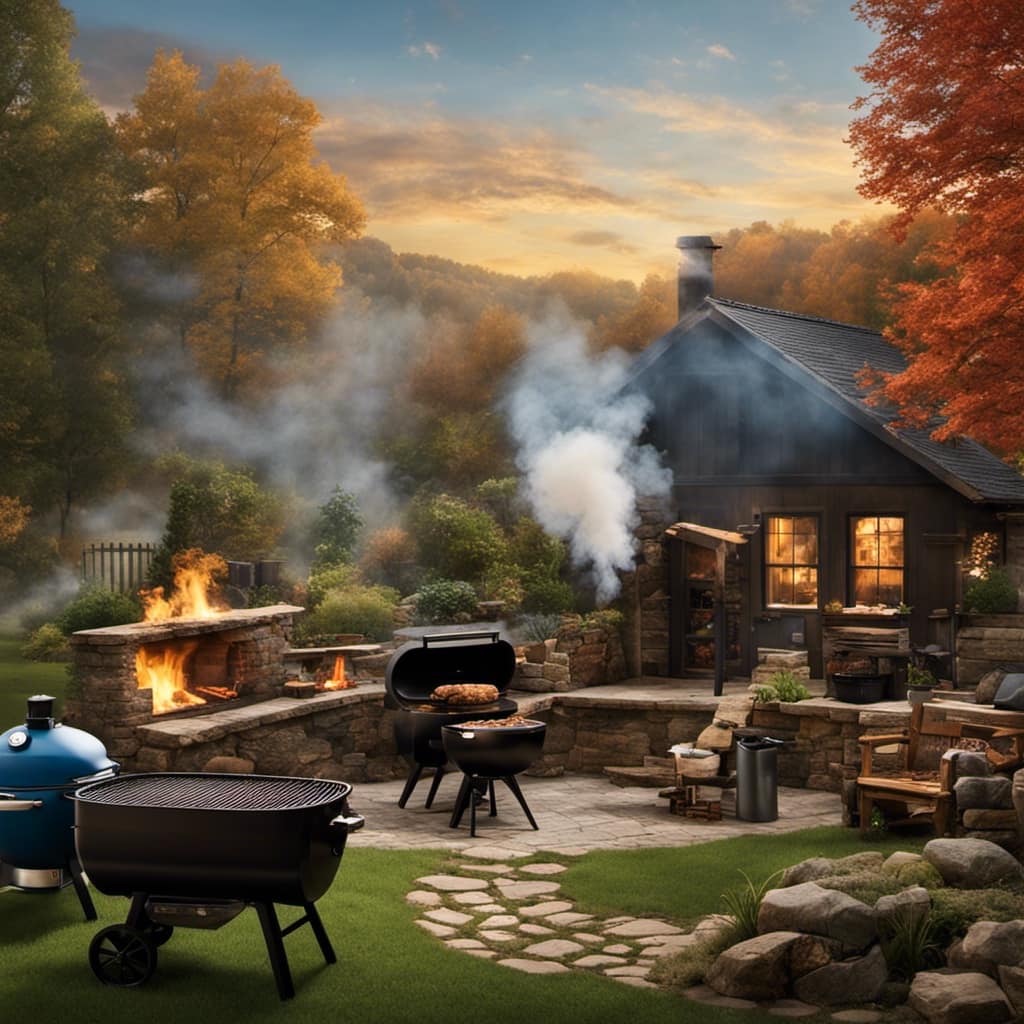
Dutch oven lasagna: Layering pasta, meat sauce, and cheese in a cast iron Dutch oven creates a mouthwatering lasagna that can be cooked to perfection on the wood stove.
Skillet cornbread: Made with cornmeal, buttermilk, and a touch of honey, this golden cornbread is deliciously crispy on the outside and moist on the inside.
Apple crisp: Sliced apples, cinnamon, and a crunchy oat topping baked in a cast iron skillet make for a comforting dessert that’s best served warm with a scoop of vanilla ice cream.
Wood-fired pizza: Roll out your favorite pizza dough, top it with your favorite ingredients, and cook it directly on the wood stove for a smoky and delicious homemade pizza.
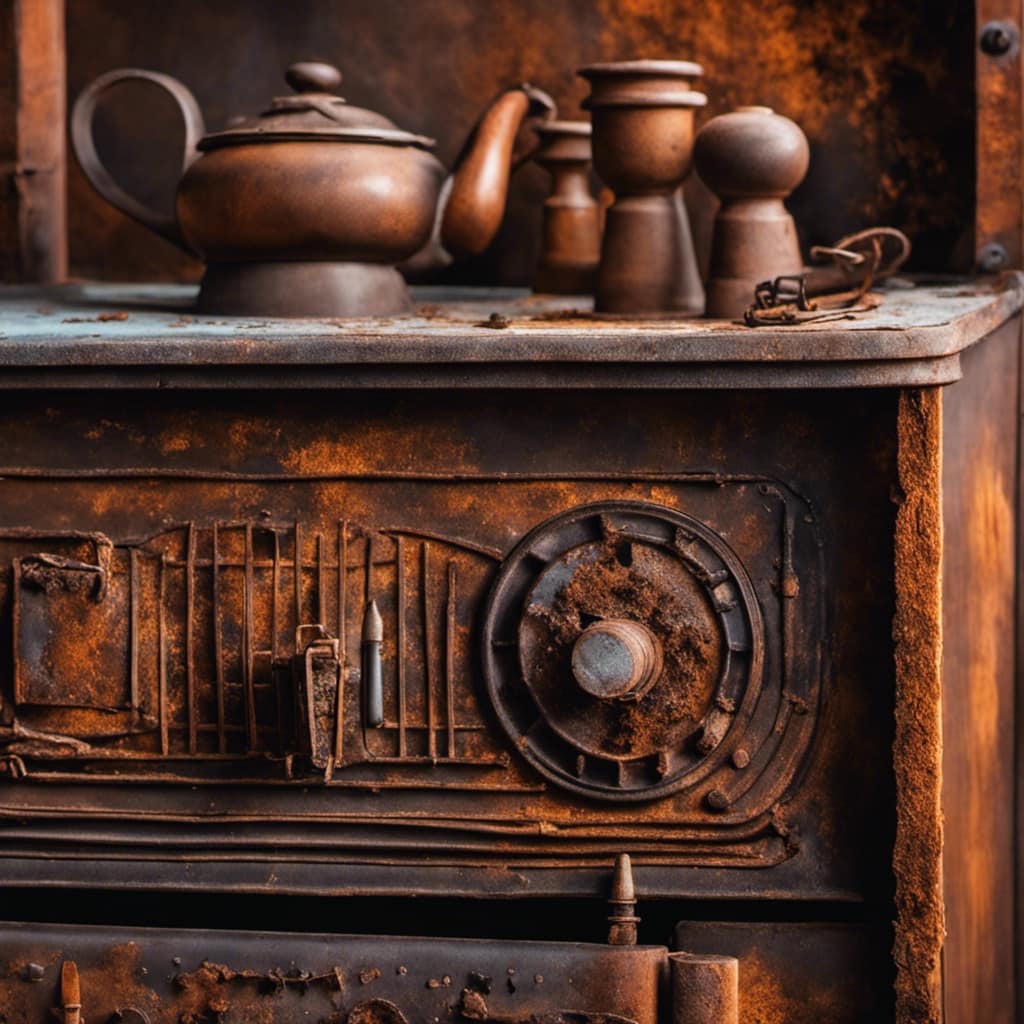
Wood stove meal planning can be both practical and enjoyable. By incorporating these wood stove cooking techniques and recipes into your meal planning, you can create delicious and memorable dishes that will leave your taste buds wanting more.
Can Getting a Wood Stove to Burn Hotter Affect Cooking?
Absolutely, getting a wood stove to burn hotter can definitely affect cooking. When a wood stove burn hotter, the increased heat can result in faster cooking times and more evenly cooked food. It can also provide a more intense flavor to grilled or smoked dishes.
Safety Tips for Cooking on a Wood Stove
When cooking on a wood stove, it is crucial to prioritize safety to prevent fires and ensure proper ventilation. Here are some essential tips to keep in mind:
Fire Prevention: Always exercise caution and take preventive measures to avoid accidents. Keep flammable objects, such as potholders, towels, and curtains, away from the stove. Never leave the stove unattended while cooking, as this increases the risk of fire. Additionally, make sure to have a fire extinguisher nearby and regularly check the stove for any potential hazards.
Proper Ventilation: Adequate ventilation is essential to maintain a safe cooking environment. Ensure that the chimney or stovepipe is clean and clear of any debris or blockages that could hinder the flow of smoke and gases. Proper ventilation prevents the buildup of carbon monoxide, a dangerous gas that can be released during cooking.
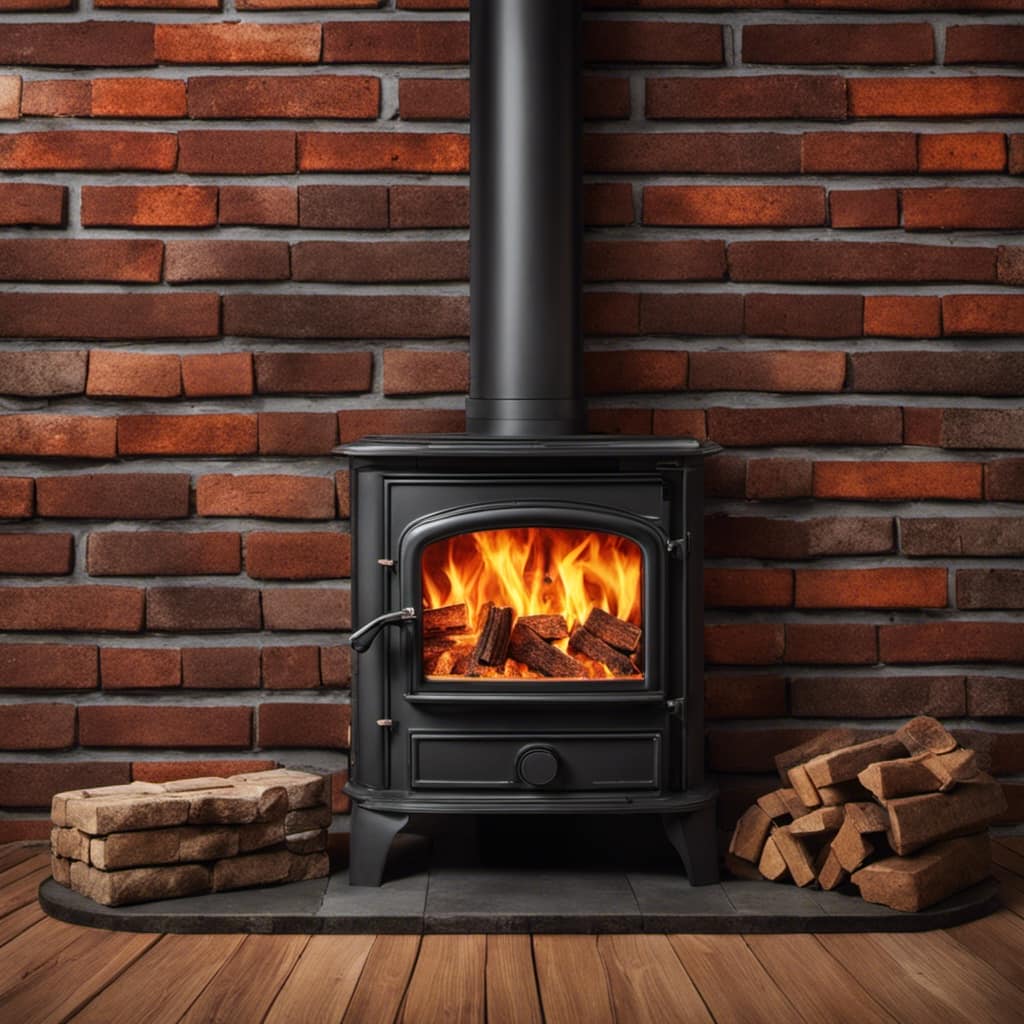
To further enhance your understanding, here is a table that summarizes these safety tips:
| Safety Tips | Description |
|---|---|
| Fire Prevention | Exercise caution, keep flammable objects away, never leave the stove unattended, have an extinguisher nearby, and regularly check for hazards. |
| Proper Ventilation | Maintain a clean chimney or stovepipe to ensure the proper flow of smoke and prevent carbon monoxide buildup. |
Frequently Asked Questions
Can I Use Any Type of Cookware on a Wood Stove?
Using different types of cookware on a wood stove is possible, but it’s important to follow best practices to ensure safe and efficient cooking.
The type of cookware you use should be suitable for high heat and should have a flat bottom for even heat distribution. Cast iron and stainless steel are great options.
Avoid using cookware with plastic handles or coatings that can melt or release harmful chemicals.
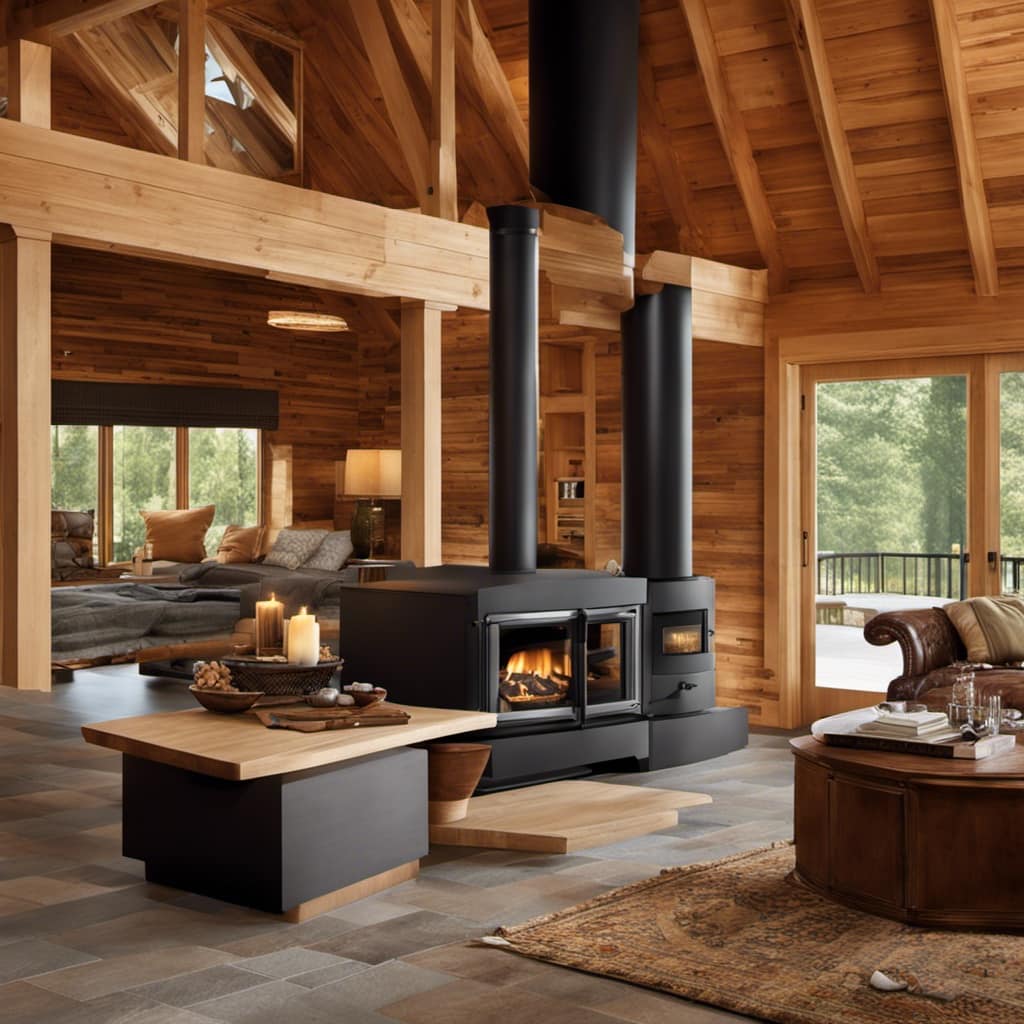
Always monitor the cooking process closely to prevent any accidents or burning.
How Do I Clean and Maintain My Wood Stove for Cooking Purposes?
To clean and maintain my wood stove for cooking purposes, I follow a few simple steps.
First, I remove all ashes and debris from the stove.
Then, I scrub the interior with a mixture of warm water and mild soap, making sure to remove any built-up residue.
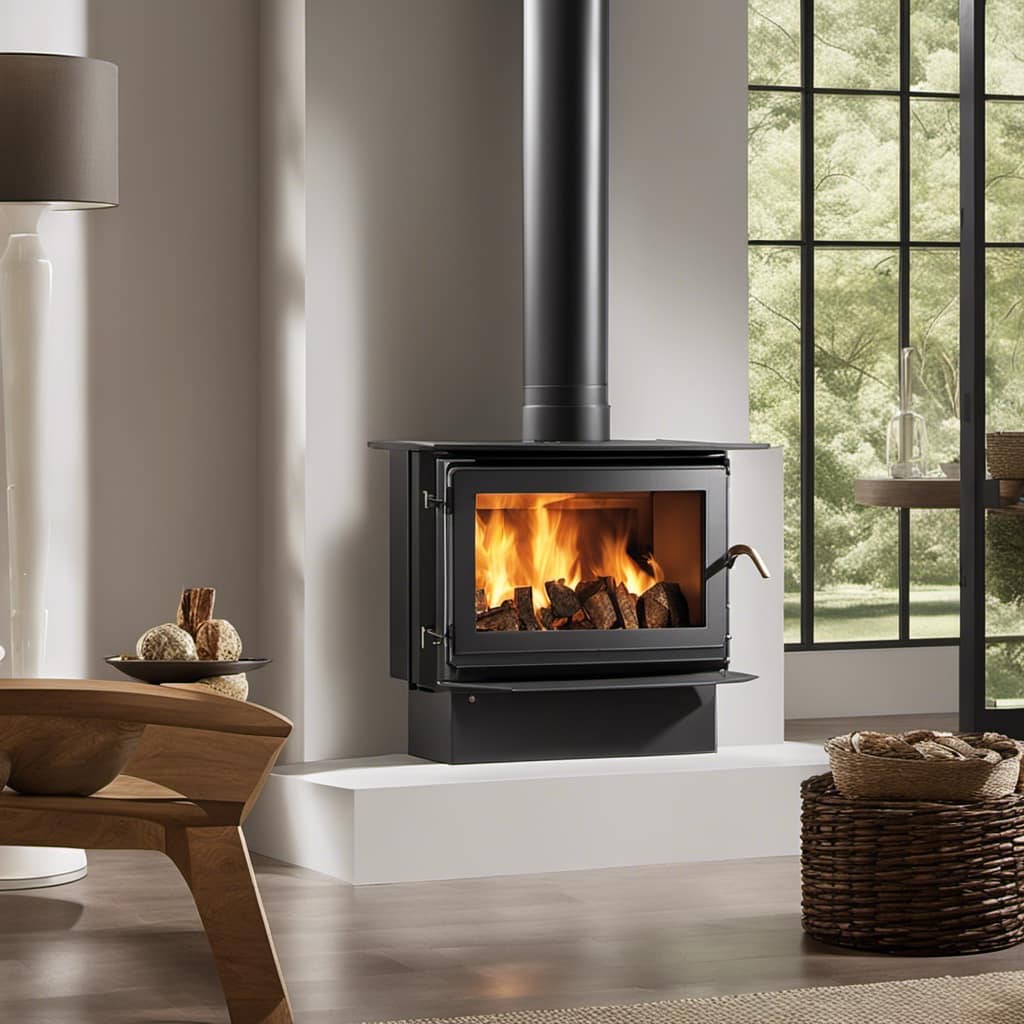
Next, I check the stovepipe for any blockages and clean it if necessary.
Finally, I inspect the stove for any signs of wear or damage and make any necessary repairs.
Are There Any Specific Tips for Baking on a Wood Stove?
To achieve even baking on a wood stove, there are a few tips that I’ve found helpful.
First, make sure to preheat the stove before placing your baked goods inside. This helps to distribute the heat evenly.
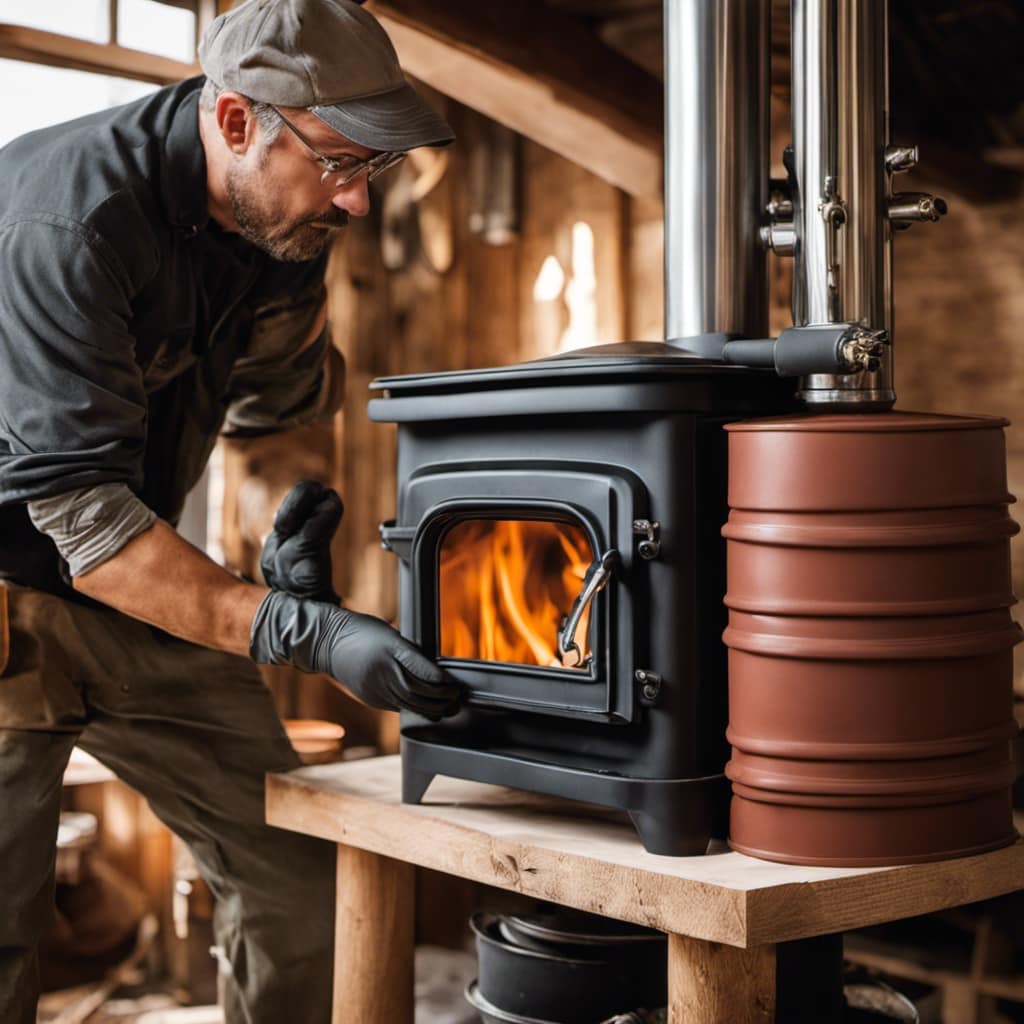
Additionally, you may need to adjust your cooking times and temperatures slightly. Keep a close eye on your baked goods and use a thermometer if necessary to ensure they’re cooked through.
With practice and patience, baking on a wood stove can yield delicious results.
Can I Use a Wood Stove for Canning or Preserving Food?
Can I use a wood stove for canning or preserving food?
Absolutely! With its steady heat and versatile cooking surface, a wood stove is a perfect tool for canning techniques and preserving methods.
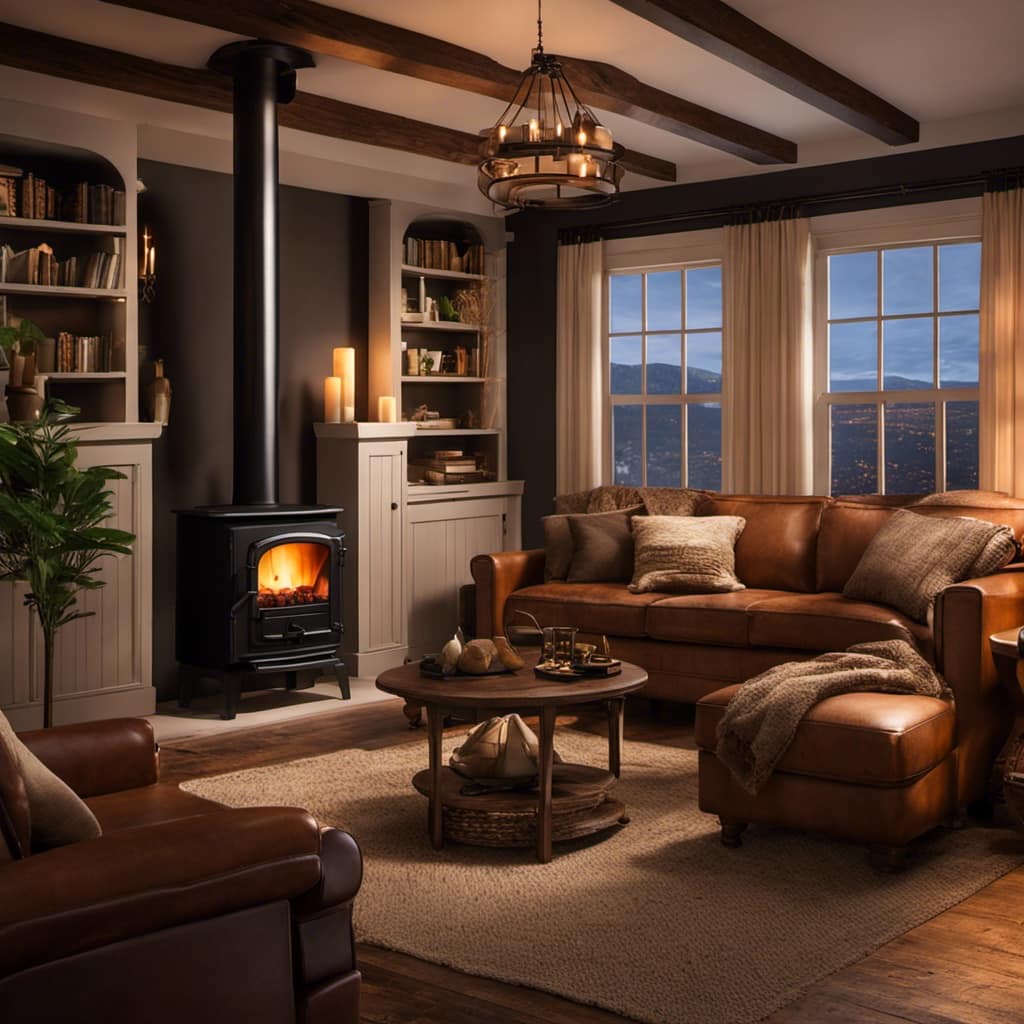
The consistent temperature ensures proper sterilization of the jars, while the wide cooking area allows for multiple pots to be used simultaneously.
Just make sure to regulate the heat carefully and follow all safety guidelines to enjoy delicious, homemade preserves straight from your wood stove.
How Do I Prevent Smoke and Odors From Permeating My Food While Cooking on a Wood Stove?
To prevent smoke and odors from permeating my food while cooking on a wood stove, I’ve found a few key strategies.
First, it’s important to use well-seasoned firewood to minimize smoke production.
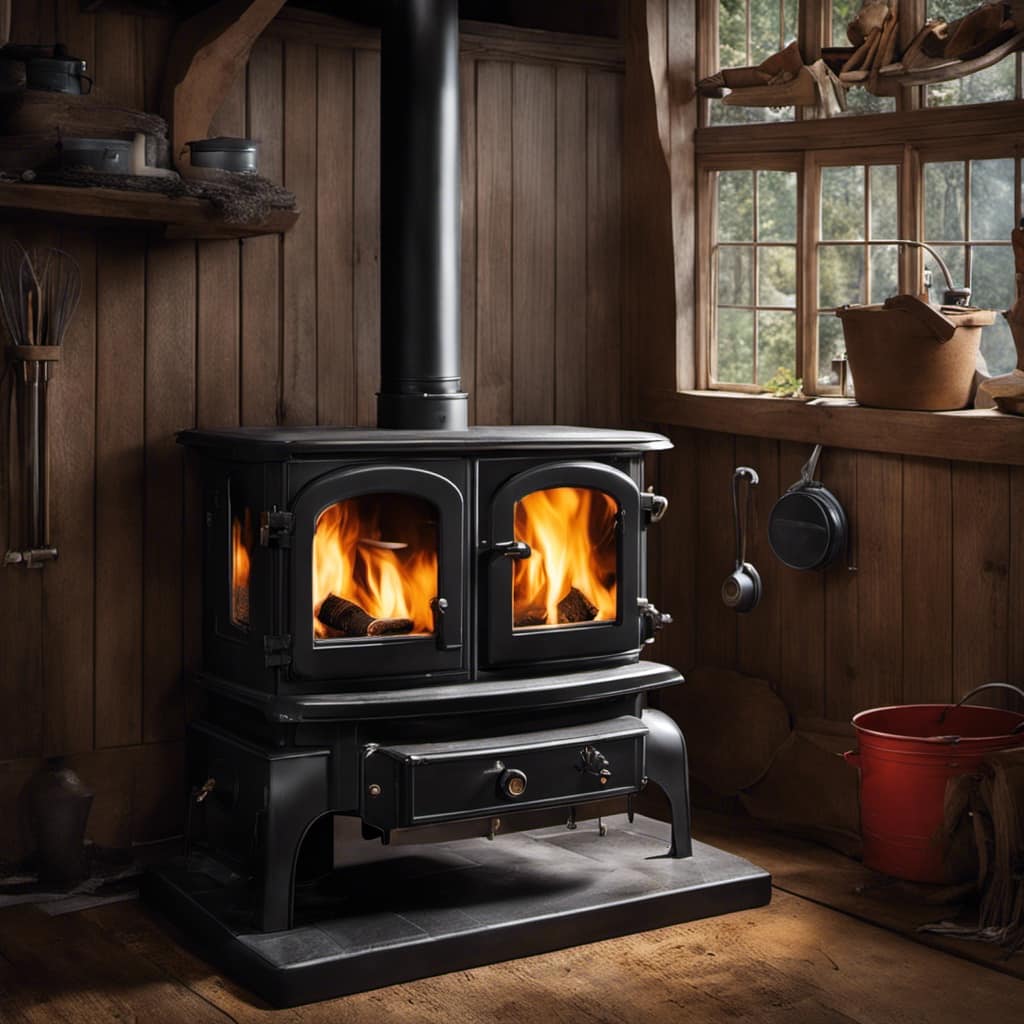
Additionally, I ensure proper ventilation by opening windows or using a vent hood.
I also position my cookware correctly on the stove to maximize heat distribution and minimize the risk of burning.
Conclusion
Cooking on a wood stove can be a rewarding and flavorful experience. By choosing the right cookware, preparing your stove, and controlling the temperature, you can master the art of wood stove cooking.
From basic techniques to delicious recipes, there’s a world of possibilities waiting to be explored. Just remember to prioritize safety and enjoy the rustic charm that comes with cooking on a wood stove.
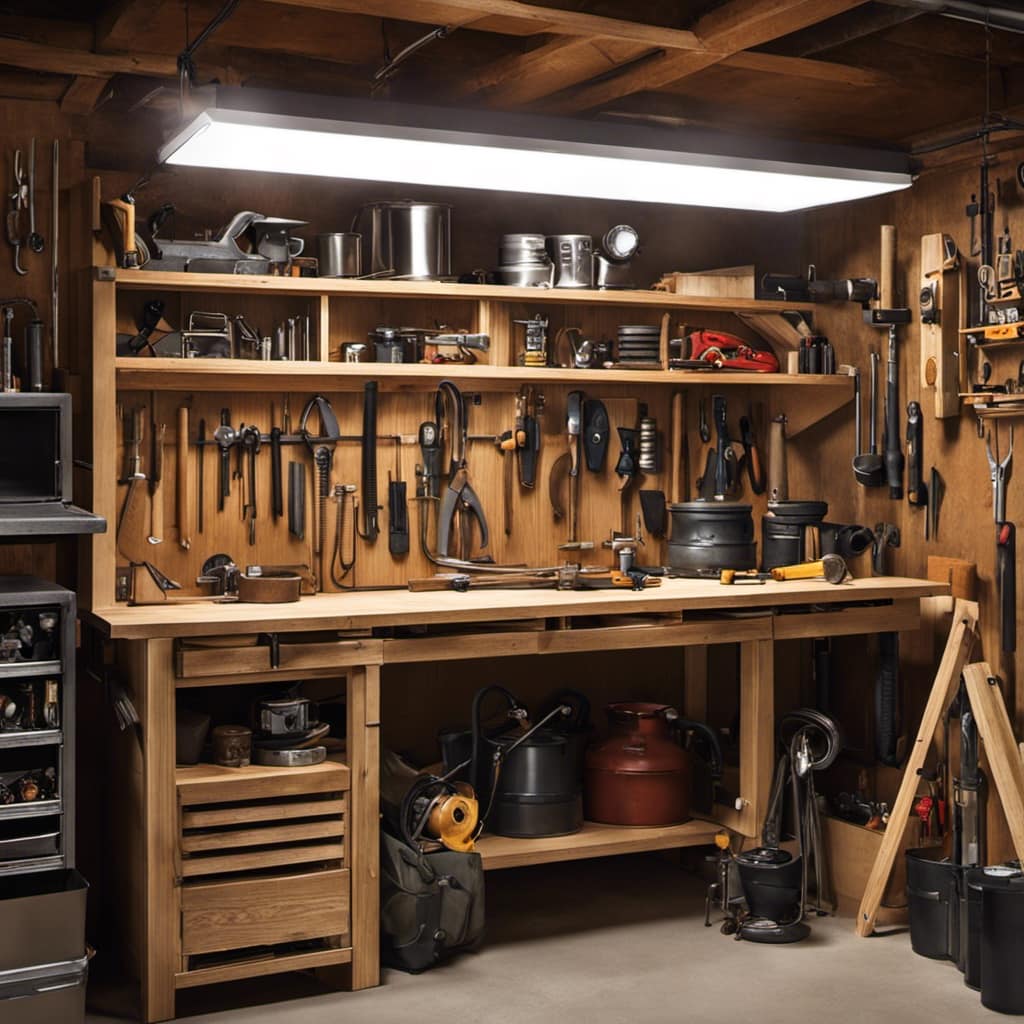
So, gather around the fire and let your culinary adventures begin.
Growing up surrounded by the vast beauty of nature, Sierra was always drawn to the call of the wild. While others sought the comfort of the familiar, she ventured out, embracing the unpredictable and finding stories in the heartbeat of nature.
At the epicenter of every remarkable venture lies a dynamic team—a fusion of diverse talents, visions, and passions. The essence of Best Small Wood Stoves is crafted and refined by such a trio: Sierra, Logan, and Terra. Their collective expertise has transformed the platform into a leading authority on small wood stoves, radiating warmth and knowledge in equal measure.




